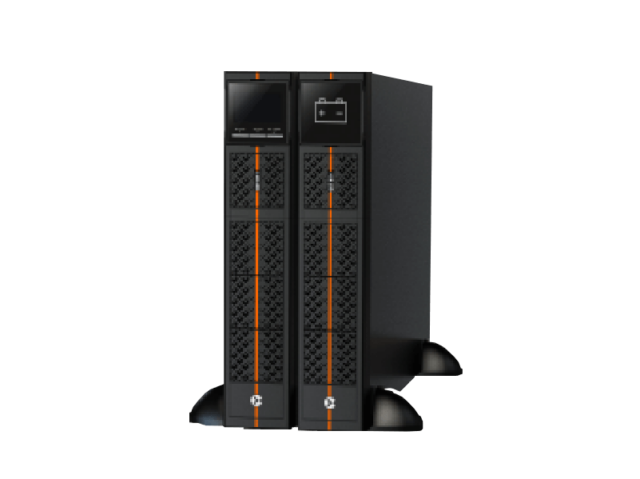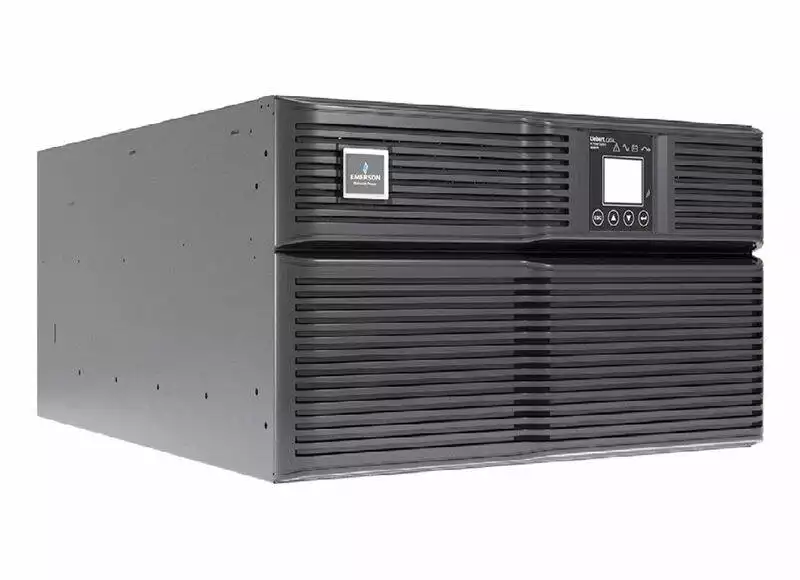
In today’s world, an uninterruptible power supply (UPS) is a must-have. With energy powering practically every facet and application of modern business, the lack of an uninterruptible power supply system can seriously impede business operations. In today’s economy, maintaining power quality and reliability for mission-critical infrastructures is a constant issue. To enhance availability and profitability, complex systems and processes require constant and clean electricity.
The UPS is a device that supplies backup power to a structure in the case of a power outage. It could be an uninterruptible power supply (UPS) designed specifically for a hospital or data center that has to keep running during a power outage.
There are numerous features and advantages to UPS systems that can assist you in selecting the finest UPS technology for your company. The following are some of these characteristics:
-Output Power Factor Correction (PFC)
-Battery Backup
-Surge Protection
-Outlet Quantity
For business owners, technology is becoming more advancedand accessible. People are increasingly turning to power inverters to solve their power problems.
The first thing that you should know is the reason why you need an UPS. If your equipment needs to be protected from power surges, brownouts, or outages then you need an UPS system. The second thing to know is the size of your equipment’s battery backup system. The third thing to know is how much energy does your system need? The fourth thing to know is what type of UPS technology do you need? Finally, it’s important to consider cost when making a decision on a UPS system for your business.
THE MAIN TYPES OF UPS SYSTEMS
- A standby UPS system might also be called an offline or line-preferred UPS. It normally has an inverter, battery, static switch, low-pass filter and surge suppressor. The system remains on standby unless there’s a primary power failure.
- A line-interactive UPS system contains a battery and inverter that are always connected to the output, and if power fails, a switch changes the electrical flow. The continuous connection provides superior filtering.
- A double conversion UPS system has a backup battery that is charged by the input AC and powers the output inverter for a seamless switch.
ADVANTAGES OF USING UPS
A UPS system is required in data centers to keep the servers running. Energy is stored in a battery or another sort of power converter by UPS systems.
UPS technology is a must-have for data centers and other workplaces. It provides uninterrupted power supply during blackouts, brownouts, and other emergencies. This way it ensures that the crucial assets are protected from potential disasters, such as fire or storm damages. The below are the main advantages of using UPS.
- Continuity: Experience no outages to critical equipment like computers to factory production lines.
- Consistency: Electronics within a UPS tells it when it needs to work and kicks in alternate power as needed, which eliminates glitches or surges and allows time to safely shut down main systems if and when needed.
- Protection: Safeguards against all the oddities of electricity such as surges, spikes, dips and failure because the UPS essentially senses those things and switches to alternate power before the anomalies cause damage.
- Filter: A line-interactive UPS acts as a kind of filter by refining the power as it comes into the UPS then adjusting its output so that internal systems receive a clean, consistent supply free of abnormalities.
In addition to power protection, UPS systems may track the amount of energy stored in the battery to ensure that it is not exhausted during a power outage. They can then warn workers when backup batteries need to be replenished, ensuring optimal efficiency and data asset security.
SELECTING THE CORRECT UPS MODEL

The first step is to learn about the equipment’s specifications. Investigate what you require for your environment and choose a UPS model that includes those qualities. A standby UPS should be sufficient if you have a backup generator. If not, an online UPS might be required.
From the standpoint of your operational demands, the second step is to assess vendor reliability and customer satisfaction for each model you’re evaluating. There are a variety of models available from various manufacturers, so it’s critical to choose the ideal one for your company’s demands. The more power used, the less time the UPS has to keep everything powered up. When choosing a UPS, choose one with an output watt capacity that is 20-25 percent greater than the total wattage of the devices you intend to connect. To calculate your overall load, utilize the UPS watts calculator. After you’ve calculated how much runtime you’ll have, you’ll want to look at the brand and options available.
WHERE DO YOU PLAN TO INSTALL THE UPS SYSTEM
UPS systems come in a variety of sizes and form factors.
- Desktop models are compact to fit on a desk, protecting computers and peripherals.
- Tower models stand upright on the ground or on a desk/shelf. They are typically used in network workstations or desktop computer applications.
- Rack-mount models can be mounted in standard 19″ rack enclosures and require anywhere from 1U to 14U (U=rack space). They are typically used in server and networking applications.
While we strongly advise that you acquire the precise UPS unit you need with the capabilities you desire (and there’s no way to accomplish that without doing the arithmetic we explained above and some thorough comparison shopping), a UPS is not inexpensive. If you want to preserve the investment you’ve made in your computer system, though, you’ll want to get one right away!
We hope this clarifies a few things on how to pick out the best UPS for your system.
BEST PRACTICES FOR MONITORING AND MAINTAINING YOUR UPS SYSTEM
The UPS system is a critical part of any organization’s, office’s, or home’s infrastructure. Keeping your UPS system in good working order will help you prevent costly downtime and other inconveniences.
One of the greatest methods to guarantee that your UPS system is performing at its optimum is to keep track of your power usage. This will allow you to monitor how much energy you consume and find areas where you can improve your energy efficiency.
A UPS battery monitoring system essentially provides you with a better level of testing than what a technician would perform, but continuously. It will also allow you to keep track of the different metrics such as voltage, current, battery status, so you can make sure your batteries are always up, available, and working. Following the industry’s best practices is crucial, though, to ensure dependable network uptime. Proactive testing and maintenance are the keys to ensure a long life cycle.
UPS MONITORING BEST PRACTICES
One of the most common causes of network downtime is UPS battery failure. To avoid this problem, deploying a monitoring system is only the first step; you must also ensure that the system you choose is effective. An successful monitoring system will adhere to industry best practices and provide you with capabilities that can mean the difference between dependable uptime and catastrophic downtime.
The following are some of these best practices to keep in mind when choosing a monitoring system for your company.
- Monitor your batteries at the cell level
- Think about your car’s battery – they have a way of failing with little to no warning. Wouldn’t it be good to know when your battery is about to die?
- That’s exactly what remote monitoring devices do for your company’s UPS system. But, in the case of UPS batteries, a failing battery puts extra strain on all the other batteries in the string. It will draw power from the other batteries, decreasing their lifespan.
The UPS lifespan can be affected by many different aspects, such as:
- Voltage and current
- Temperature
- Overcharging
- Frequent discharge cycles
- Strained battery terminals
- Loose connection
It should be noted that a failing battery puts additional load on the rest of the battery string. It will drain the other batteries’ power, reducing their lifespan.
As a result, it’s surprising that many businesses still don’t check their batteries or believe that string-level monitoring is sufficient. However, this is not the case. Keep in mind that batteries must be checked on a cell-by-cell basis.
If you don’t keep track of your batteries at the cell level, you will be unaware of a failed battery that takes the whole string down with it. There will be a complete network outage without warning. Because you’ll have to replace all of your batteries prematurely, this can be incredibly pricey.
So, to make sure this doesn’t happen, you need to have a battery monitoring system connected to each battery cell. This way, you’ll be provided with automated performance measurements.
WHY SHOULD YOU INVEST IN A GOOD UPS SYSTEM?
Since we’re living in the so-called developed world, a reliable mains supply is something we tend to take for granted. Yet many of us have discovered that it pays not to be lulled into a false sense of security.
Mains spikes do occur in the UK, and the consequences can be fairly serious, ranging from loss of data to total equipment failure. Thankfully an imperfect supply isn’t something we just have to accept.
By investing in an uninterruptible power supply (UPS), you can protect yourself against most mains power problems – and it may not even cost as much as you’d think.
There are several reasons to invest in this technology, but the most important is that it gives you a competitive edge. In today’s market, customers want prompt service from their providers, and if they don’t get it, they’ll go elsewhere. Investing in high-quality UPS equipment could help you establish a reputation for being a reliable and trustworthy company.
It’s usually best to start with some background information if you’re wondering what the advantages of investing in a good UPS system are. UPS systems are named after two components of technology: the uninterruptible power supply (UPS) and the transformer (T).
So, what does this indicate for your company? When a corporation has power outages or other service interruptions, they can rely on an Uninterrupted Power Supply. This will enable them to continue operating their business while also providing a backup battery system in case something goes wrong.
Any business or industrial function, as we all know, necessitates the use of electricity. Without a consistent source of electricity, life would grind to a standstill. Power outages can be caused by natural disasters, human error, or equipment failure. As a result, investing in uninterruptible power supply (UPS) technology is crucial to preventing downtime due to power outages at your company.
There are many UPS technologies available in the market today but before you invest in one, it is important that you do your research and find out which type of UPS will best suit your business needs.
UPS, or Uninterruptible Power Supply, is a technology that you should invest in because it ensures the safety of your data and ensures efficiency of your IT infrastructure and as well to have access to stable supply of electricity as a result of redundancy (that is, aside using a generator).
The best seller available for you to get any brand or product of UPS either in units or in bulks, and battery inverter is KARA. We are actively available to sell and deliver your order at any place in time.
You might also like some other product we have available to suite your demand.
Visit kara.com.ng to search for any gadget of your choice and it shall be delivered with utmost fidelity.












